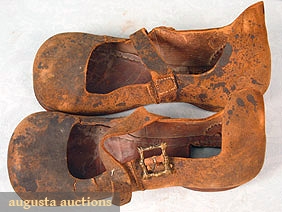
“A man’s clothes were a matter of great public importance, a woman’s less so. With his clothes a man advertised his place in society, a fact that had serious consequences in Tudor England. Laws restricted a man’s rights to wear certain fabric and colours to those within particular social strata so thoughtless dressing could land a man in legal trouble” – Ruth Goodman
The use of cloth of gold and purple silk was reserved to members of the royal family and declared in the statute of 1483. The legislation of 1483 reserved cloth of gold of silk or purple silk to the King, the Queen, the King’s mother and the immediate royal family. The legislation of 1509-10 then applied the same to cloths used for horses.
Sumptuary laws were passed during Henry VIII’s first Parliament to preserve rank and ensure no subject dressed above their rank – these laws were passed and prohibited anyone below the rank of Knight of the Garter with the exception of certain Lords, Judges and those of the king’s council and the Mayor of London to wear velvet in their gown and doublet, or satin or damask in his gown or coat. Others with the title of Earl or higher could wear sable fur. With that being said, other furs could be worn by lower ranks.
There were also certain clauses that prohibited the wearing of foreign wools and furs, which protected local businesses and trade.

Tudor Men’s Hats
While styles of hats varied, common amongst the commoners of the time were the “flat caps” which had been in use for much of the Tudor reign. These might be made of wool, felt, or leather, and could be lined with linen. Amongst the nobility, tall hats similar to a modern top hat, but featuring a tapering crown, or an arched brim hat might be popular amongst both men and women. Italian style “bonnet” hats also were popular during the period, and any of these hats could be made of a fine fabric over a frame of linen stiffened with gum. Leather was also a popular material for the construction of fashionable hats. – Tudor Shoppe

Tudor Men’s Shoes
The legs were covered with hose, which had become two separate pieces. Upper stocks covered the top half of the leg, while lower stocks covered the bottom. The differentiation between the two pieces is particularly clear in Henry’s portrait. The emphasis on width is continued all the way down to the shoes, called duckbill shoes. Duckbill shoes were flat and square in front, made of leather, and could be slashed for decoration. – The Fashion Historian

Brown leather, wide rounded toes, brass side buckles, shoes.


Sources/References:
Wooglar, C.M.; “The Great Household in Late Medieval England”
Goodman, Ruth; “How to be a Tudor – A Dawn to Dusk Guide to Tudor Life”
Mason, Emma; “What clothes did people wear in the Tudor period?” via History Today
—



